Hunting the Wild Salad
As we head into winter here in South Australia, the cooler weather and rains bring nourishing growth that, if we know what we're looking for, we can make good use of. A quick look around the local area and there are plenty of wild, or perhaps that should be feral, edibles to be had. Some are still at seedling stage, but some are already at a harvestable stage.
Wild Lettuce
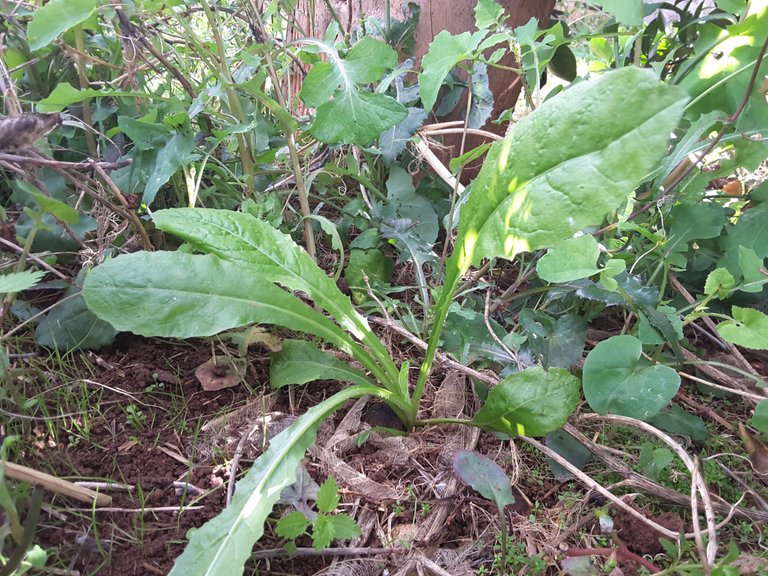
Let's start with a potential salad. Currently wild lettuce, lactuca serriola, is in its early stages and at this point it can be eaten raw or cooked and is pretty similar to lettuce as we know it, maybe not as sweet. Apparently even the stems, when young, can be cooked and used as an asparagus substitute.
Funny story, I first tried this by accident as I saw it coming up in one of the large plant pots, recognised it as lettuce, asked my husband if he'd put lettuce seeds in there and he replied, “I think so.” So there I was adding it to salads, then started to wonder why it was a bit spiny down the back of the leaf as it got bigger.
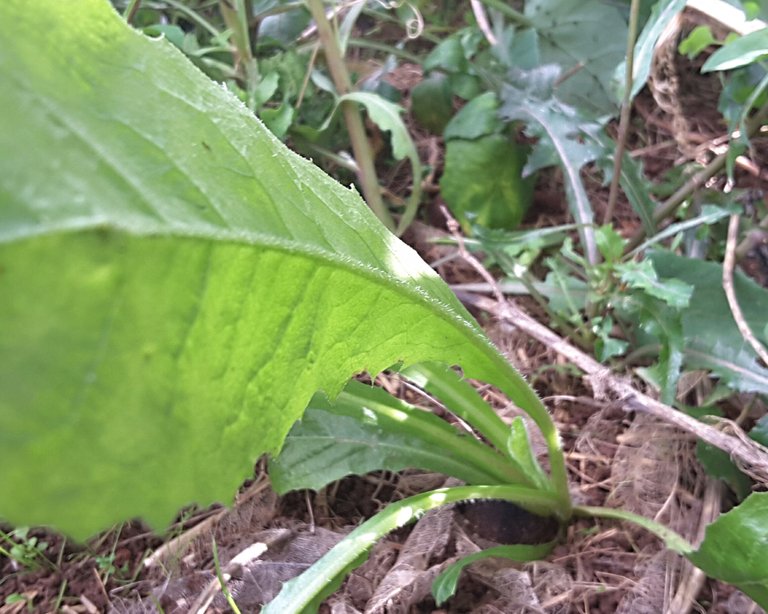
Then the leaves started coming out a completely different shape and I realised it wasn't domestic lettuce after all!
Once it gets mature the leaves become darker, the plant produces more white sap and the taste gets very bitter. The whole plant becomes spinier along the stems to a point where you should probably use protective gloves if you want to pull it up, or risk the spines breaking of in your skin. The sap is known by some as poor man's opium, because it has sedative and pain relieving properties. I'm not going to try and go into this, because I don't know enough about it, but as with anything medicinal caution should be used, because we all react differently to different things.
Some further information for those who are interested:
https://commonsensehome.com/wild-lettuce/
https://www.survival.org.au/bf_lactuca_serriola.php
Dandelion
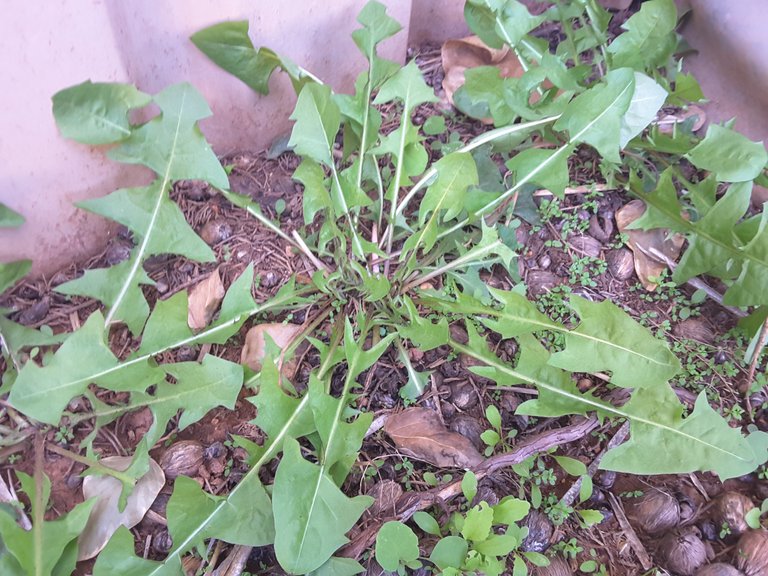
Continuing with our salad ingredients, let's add some dandelion. Most of us will likely be familiar with this plant and its dandelion clock seed heads, but did you know that it's not just bunnies that can eat them? We actually get them year round here, but drier conditions make them extra bitter, so with the winter rains the young leaves are more palatable. If they start to get a bit big and bitter, then I can just feed them to the rabbits or chickens, because they think they are still just as yummy.
There are a few of plants that sometimes get mistaken for dandelion. Here they are generally cats ear, sow or milk thistle and cape weed. Dandelion leaves have pointier teeth than cats ear or cape weed and don't feel as plump. Sow and milk thistle have slightly similar leaves to dandelion when young, but dandelion stays flatter to the ground with the leaves fanning out in a rosette from a central point, whereas the thistle leaves come out from a central stem.

A sow thistle can look similar to dandelion in its earlier stages.
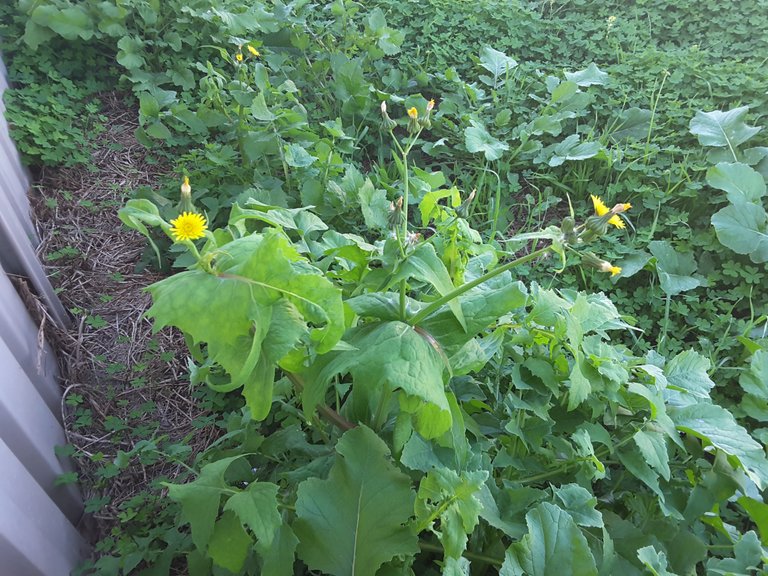
As it gets bigger it's obviously not staying close to the ground.
Cape weed is the only potential toxic one and I find the easiest give away for it is if you look at the underneath of the leaf it has a silvery, fuzzy appearance. While it can be toxic, the young leaves can be cooked and eaten if you're desperate enough.
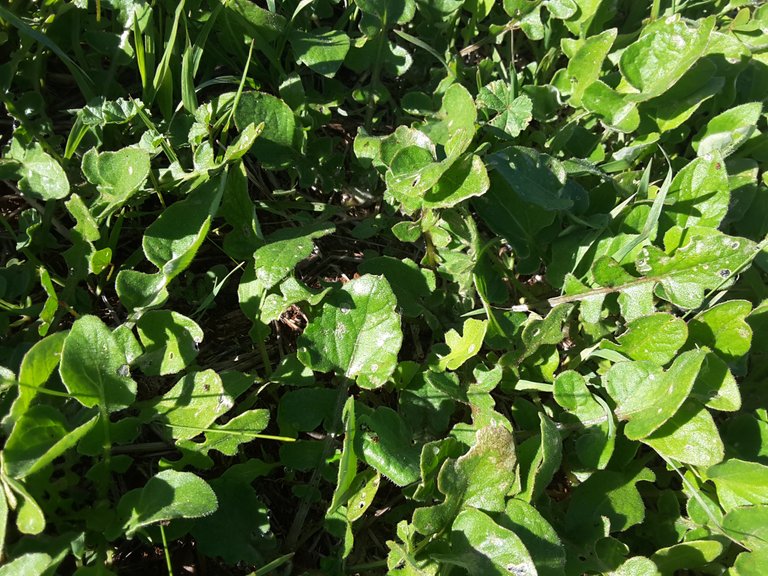
Cape weed
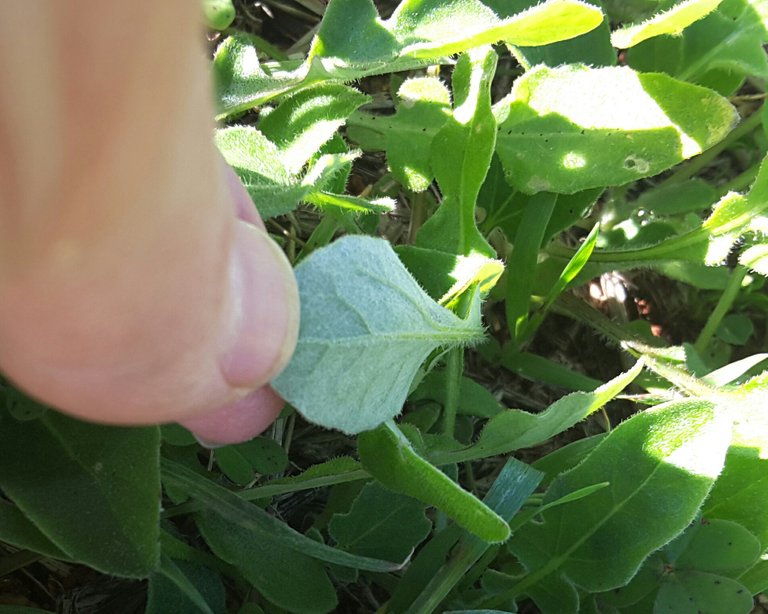
Chickweed
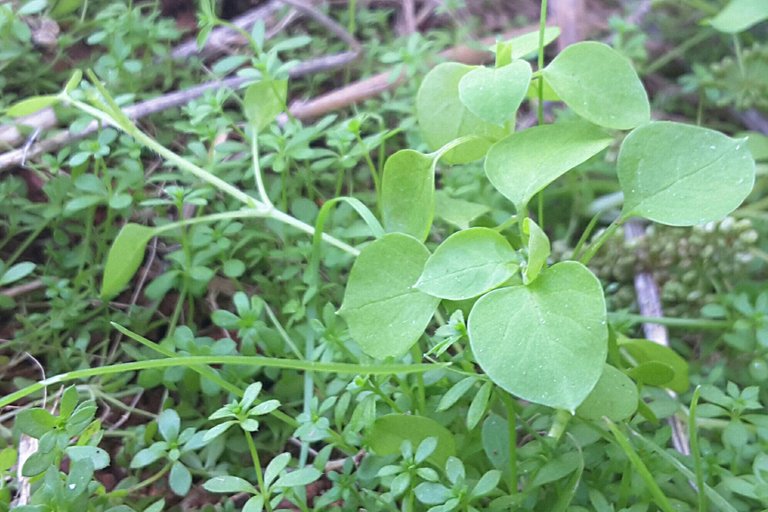
Something else that's ready to be added to the salad right now is chickweed, Stellaria media. This is just a good all round edible, with no worries about needing to get to it before it goes bitter. You can harvest at any point and it still tastes good. There are a few similar looking plants, which, while they won't poison you, won't taste as nice. There are a couple of ways to identify chickweed; one is to look at the stem and you should be able to make out a single line of fine hairs down one side of the stem, which changes to the other side on the next section. The other is if you pull the stem apart, instead of separating cleanly you should see a central core with an outer skin which surrounds it.
Marshmallow
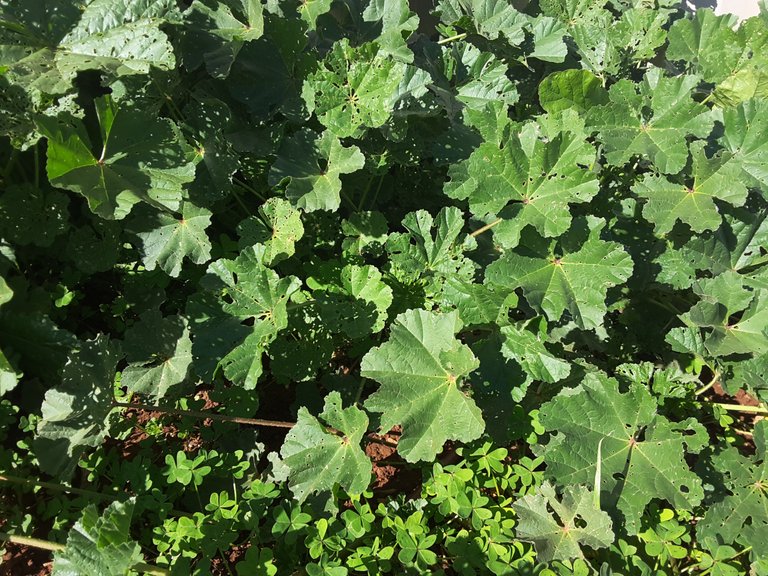
Marshmallow, or mallow weed, malva parviflora is another you can add to a salad, but it's a little tougher than our previous offerings, so I generally prefer to use it more like spinach if I can get to it before the bugs and rust. If not, the rabbits still love it.
When this plant comes up in my garden it's distinctive from the start with those little heart shaped first leaves. You should be able to see them in this photo of a seedling. They grow just about anywhere!
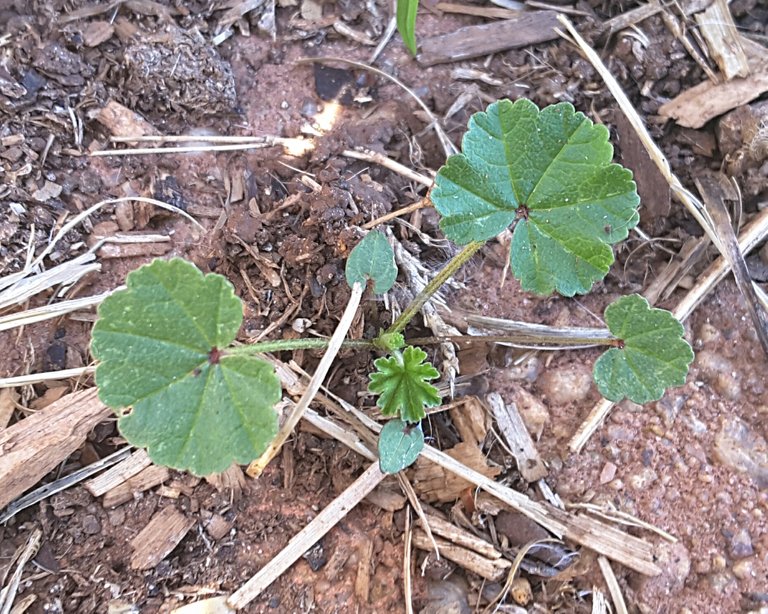
Nettle
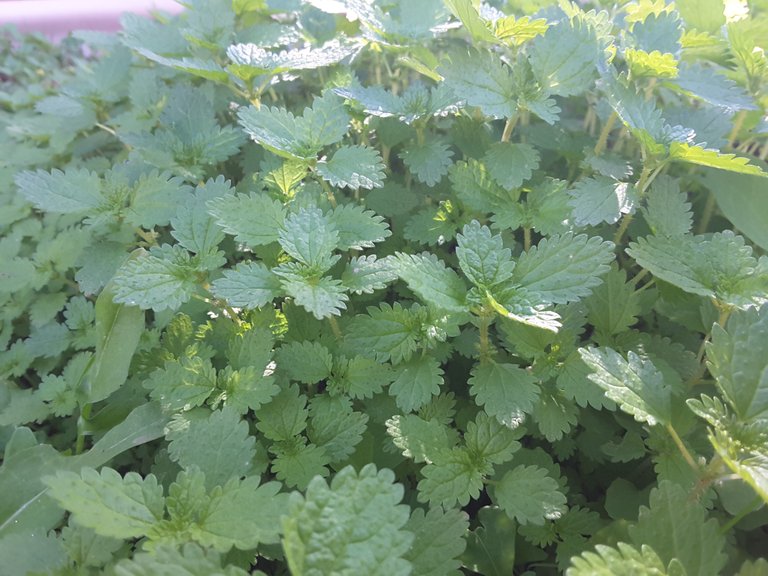
When you first taste nettles, Urtica urens, you might realise why they used to be a common food in the past. As greens go, they are pretty good and its probably just the stings that put people off using them. You can eat them raw in a salad, but you might want to crush them first to deactivate those stinging hairs. Harvesting and preparing is probably best done with gloves, but they can be handled in a way which avoids the stings, mostly, and you can start to get used to them to a point where they don't bother you for more than a second or two.
Ways of deactivating the sting are cooking, drying and grinding, pulping or blending. I've used them to make pesto, as a replacement for spinach and I currently have some dried leaf powder to add nutrients to meals when they aren't in season. I've made pasta with them by replacing part of the liquids with pureed boiled nettles. Not that you could taste much difference, particularly once you've added a sauce to your meal. Incidentally, I also blend it in sauces, stews and soups.
Some use nettle to help with arthritis and this is usually prepared as a tea. Personally I don't like the taste of the tea and have no idea about dosage, so I just stick to using it in food.
Soursobs
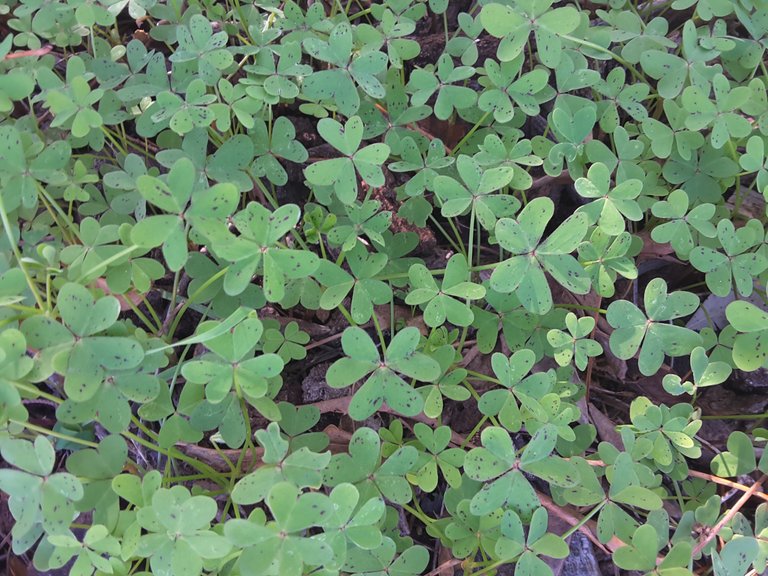
If you fancy a zesty salad then you could add soursobs, Oxalis pes-caprae, to the mix. The sour flavour of this plant comes from the oxalic acid, which can, at high levels, be toxic. However, it's unlikely you'd enjoy eating enough of them to reach the point of toxicity. The whole plant is edible, but the stems can be a little bitter. Even my rabbits prefer to just nibble the leaves and flowers off then leave the stem.
If you can dig it up, the bulb is a small nugget of carbohydrates. It doesn't have the sour taste of the rest of the plant and can taste nutty, with a slight bitter tang. Later in the year the plant will also push out a swollen root tuber, which has a sweeter, refreshing taste, compared to the standard root.
So why eat weeds?
Weeds are the most unaltered form of plants and their nutrition levels are usually much higher than the selectively bred food crops we are used to today. As you may have guessed, they are often the ancestors of the crops grown today.
These are just a few of the wild edibles we have springing to life at the moment. Many more of what we class as weeds today were once considered food.
This is my response to the @Naturalmedicine wild edibles challenge.
Much of what I've learnt of local edibles I've learnt from my friend Malcolm, @ligayagardener. He's always happy to answer questions and help with identifying plants and I want to thank him by making him 5% beneficiary of this post.
I don't know some of them that we can eat. Thank you for sharing
In recent years I've been amazed at how many plants are edible. Even many of our pretty garden flowers can be eaten.
Brilliant wild salad, my dear!! It made me smile because so many of these are NOT indigenous to Australia, so I'm guessing someone's English garden has self-seeded itself across half of SA.
How do your kids do with bitter greens? After turning up her nose at rocket (but eating it begrudgingly) for years, my Miss 15 suddenly thinks rocket and fetta salad with fresh tomato is on the A list.
Do you ever make something like a wild pesto?
Awesome entry to the challenge.
Haha! Yes, that's why I thought that feral might be a better description. I don't think any of them are indigenous. Probably more of the summer wild edibles would be. I'm wondering if purslane even is now, though. 🤔
Rocket is one my girls have always been okay with, but they weren't so keen on the wild lettuce. When making a salad one day one of them asked if it could be with the curly lettuce and not the horrible one! I didn't think it was that bitter, but obviously they did! It's usually easier to slip feral greens into cooked foods without them noticing.
I've done a nettle pesto before, but that's the only one I've tried other than basil pesto.
Love it, wild salads are where it's at 💚 I specially love marshmallow and oxalis 🌱✨💓
Oxalis was a new discovery for me when we came to Australia. It was a few years before I even discovered it wasn't a type of clover and that you could eat it. Even more recently I discovered we have another type of oxalis growing wild. I've not tried this one yet, but I think the seed pods are the go-to part.
I planted wild lettuce in my garden. Letting it go to seed was not a very good idea, I'm thinking. I'm still pulling up seedlings everywhere. The species I used was a bit too bitter for my taste, and I couldn't effectively collect the sap for use.
Oh dear! I guess this is why it's known as a weed. I did a similar thing with nettle. I would only get the occasional one, so I left one to go to seed and this year we have a carpet of them! 🤣
Curated for #naturalmedicine (by @vincentnijman) - Wow! This was so informative. Posts like these make me feel like a natural medicine noob but, then again, I'm more of a mindfulness guy or that's why I found this tribe. Nevertheless, this type of content intrigues me more and more and it brings back many childhood memories ( like picking nettles for nettle soup at my grandparents ).
I'm looking forward to some foraging when I get back to Portugal. Here, in The Netherlands, there's too little real nature and too much dog pee.
P.S. I really liked how you brought your rabbits into the story, over and over again. My dad used to call salad rabbit food ( 'konijnenvoer' in Dutch ) haha!
Join the Natural Medicine community here.
We encourage content about health & wellness - body, mind, soul and earth. We are an inclusive community with two basic rules: Proof of Heart (kindness prevails) & Proof of Brain (original content). Read more here.
Our website also rewards with its own Lotus token & we'd love you to join our community in Discord. Delegate to @naturalmedicine & be supported with upvotes, reblog, tips, writing inspiration challenges for a chance to win HIVE and more. Click here to join the #naturalmedicine curation trail!
Lol! I now have images of dogs cocking their legs on their nature walks!
I consider myself very much a natural medicine newb too. I'm still very much in the research stage and certainly a rookie when it comes to the mindfulness side of things. My logic brain struggles a bit there, but I'm making the connections.
Thank you for stopping by, @vincentnijman, very much appreciated.
Sorry about that :<)
I couldn't help but thinking that you were a pro. You're playing the part pretty well ;>)
See you around!
Is Marshmallow also known as creeping charlie? Does it get a purple flower? That grows all over my yard. I love making yard salads. My family looks at me as if I had an extra head.
I'm not familiar with that name. It looks like it's in the mint family:
https://en.m.wikipedia.org/wiki/Glechoma_hederacea
Do your family try your yard salads, Now you've demonstrated you've not grown an extra head? 😆
My immediate family does. I really enjoy having burgers now because I go out and pick some plantain major for the lettuce. I think you are correct in your assessment of creeping charlie.
These are interesting plants. It seems south Australia and Nigeria has a lot in common when it comes to plant biodiversity. I understand that Australia has a diverse climatic pattern, is your area under tropical climate? If yes, that will explain the similarity in plant biodiversity with Nigeria.
We're actually classed as a temperate climate, so more akin to southern Africa. It's the coming of the winter rains which had bright all these plants back to life. In fact, I think the soursobs come from southern Africa, which is probably why they've adapted so well here.
Thanks for your contribution to the STEMsocial community. Feel free to join us on discord to get to know the rest of us!
Please consider supporting our funding proposal, approving our witness (@stem.witness) or delegating to the @steemstem account (for some ROI).
Please consider using the STEMsocial app app and including @stemsocial as a beneficiary to get a stronger support.
Thanks for bringing this to us and also to start with these are weeds that are sometimes useful to man to some extent as well. In Nigeria we have numerous natural weeds as plant that are of such uses and grade too.
You should share some for the challenge. We'd love to learn more about them.
Oh that's will be great. I'm on it very soon. Thanks for the feedback